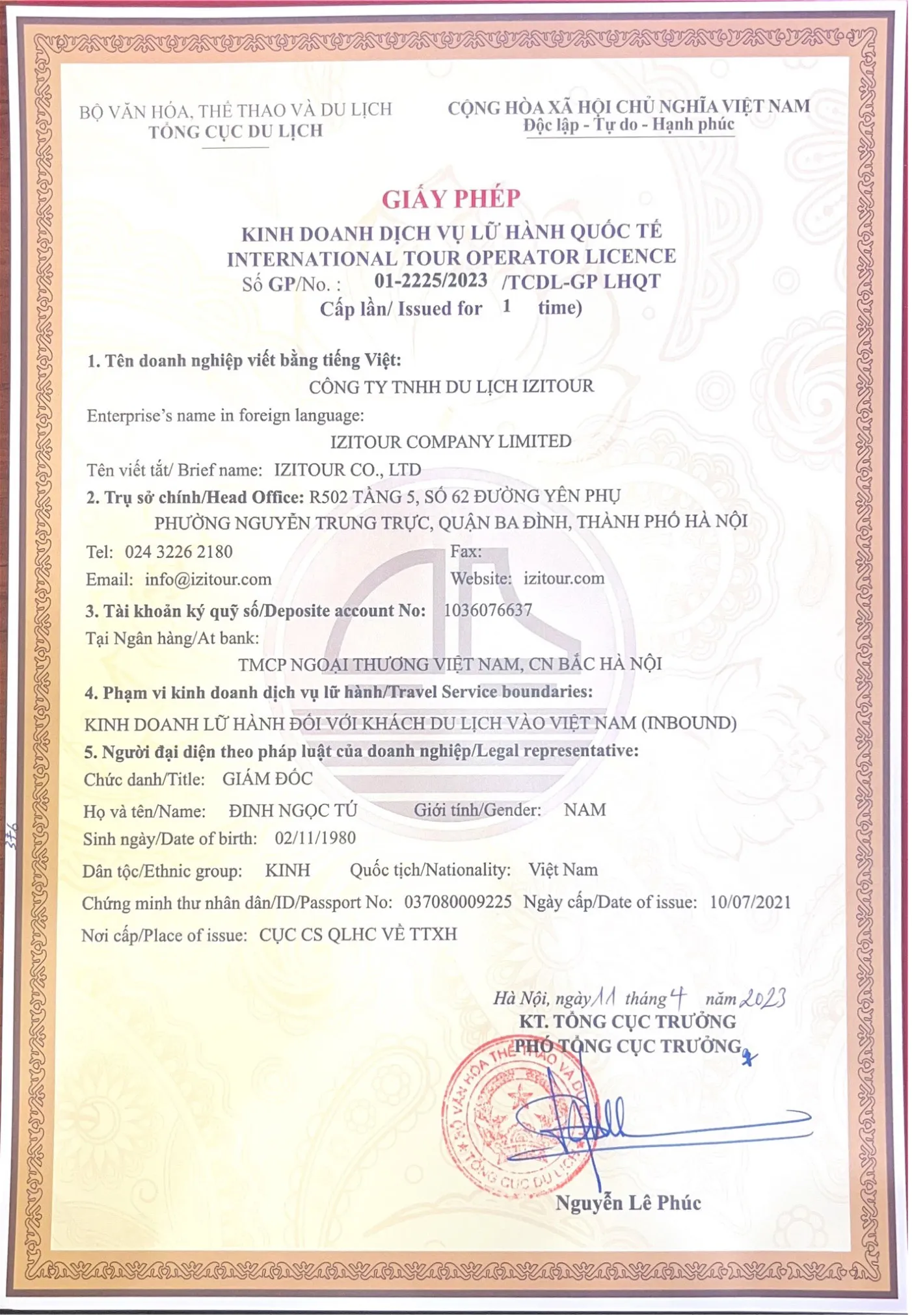Betel chewing is an age-old tradition in Vietnam, instantly recognizable by the red-stained teeth and sidewalks it often leaves behind. Made by wrapping areca nut, slaked lime, and sometimes tobacco in a betel leaf, it’s more than just a habit—it’s a cultural practice rooted in social connection, symbolism, and ritual.
You’ll still see it in rural villages, at wedding ceremonies, or during offerings to ancestors. But if you’re new to Vietnam, you might not know what it is, why it’s chewed, or what it represents. That’s where this guide comes in. By the end of this article, you’ll understand what betel chewing is, how it’s used in Vietnamese culture, and what it means to the people who still practice it today.
1. What is betel chewing?
Betel chewing in Vietnam involves a mixture called trầu cau. It’s typically made by combining thin slices of areca nut with slaked lime paste, all wrapped in a glossy, heart-shaped betel leaf. Sometimes, a pinch of tobacco is added too. The bundle—called a quid—is tucked into the cheek and chewed slowly.
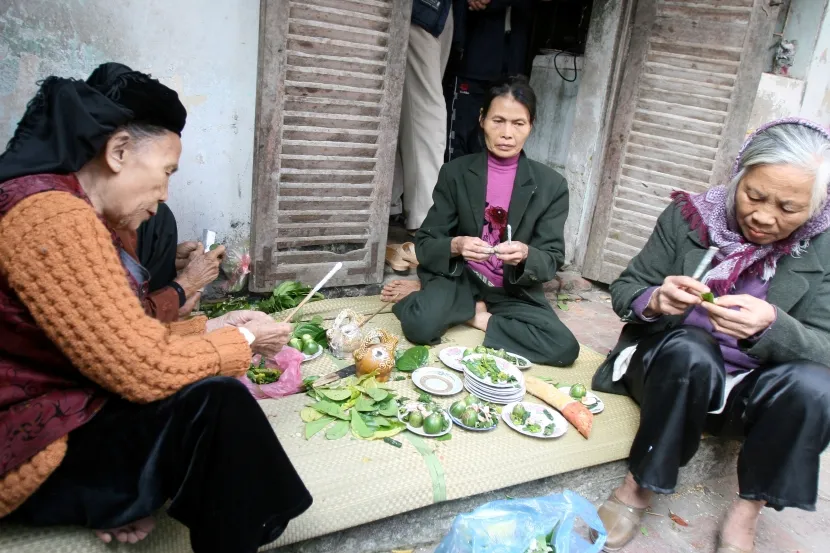
Elderly Vietnamese women preparing betel for a ceremony
The mixture produces a warm, spicy taste and turns the saliva red. Chewers usually spit out the excess, which is why you’ll see rust-colored stains on the ground.
It’s important to note: while it’s called “betel chewing” the stimulant effect actually comes from the areca nut, not the betel leaf. The combination creates a mild buzz and acts as a social or ceremonial stimulant, especially in older generations.
While it might look like a casual habit, every element of the betel quid carries cultural meaning—and that’s what makes it so significant in Vietnam’s traditions.
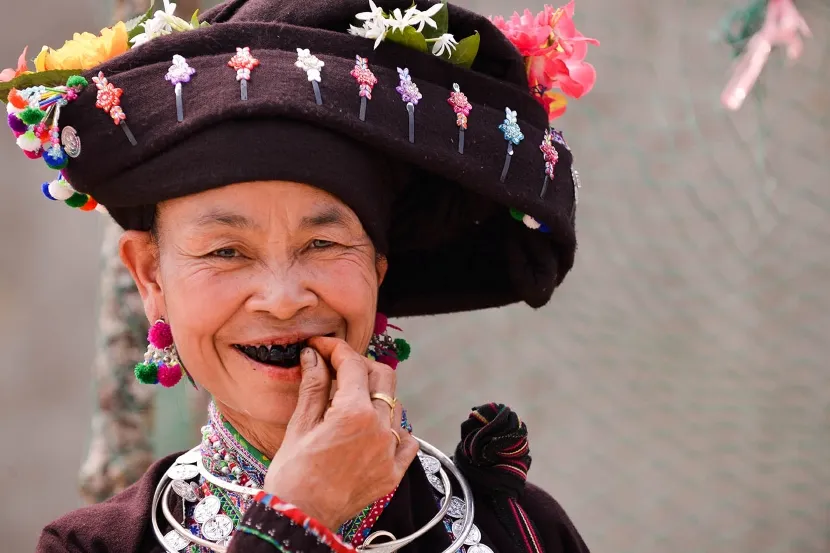
A Vietnamese woman chewing betel
2. A tradition rooted in Vietnamese culture
In Vietnam, betel chewing isn’t just a personal habit—it’s woven into the country’s cultural and social fabric. Known as ăn trầu, the practice has been passed down for generations and is closely tied to values like respect, hospitality, and connection.
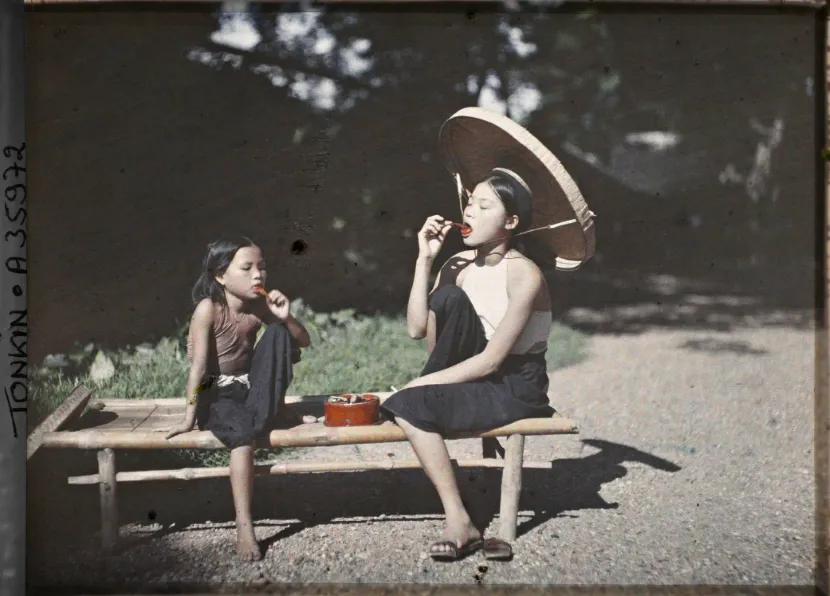
A young girl and a young woman sitting on a bamboo bed chewing betel, photo since 1921
In Vietnamese folklore, the betel leaf and areca nut are linked to a legend of love and loyalty, where a woman, torn between her husband and his twin brother, turns into limestone, and the brothers into the areca tree and the betel vine. This story gives the trầu cau its role as a symbol of unity and devotion—especially in marriage.
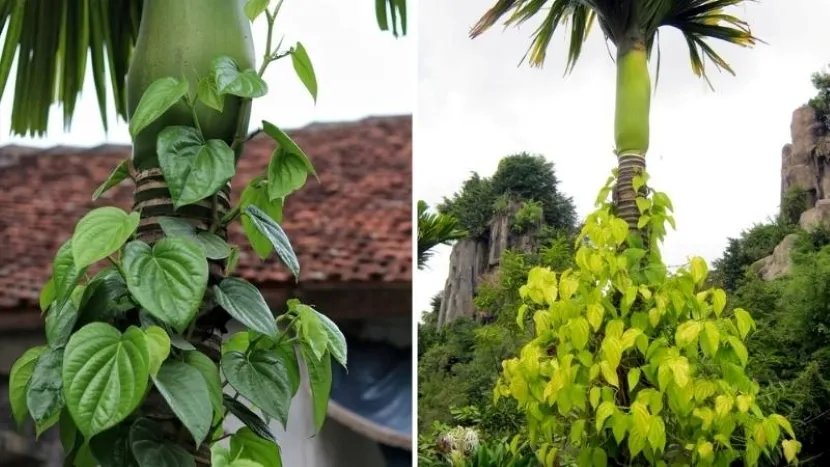
Fresh betel leaves and areca nuts in Vietnam
For centuries, offering betel has been a gesture of politeness and goodwill. Visitors to a home might be welcomed with a fresh quid. Elders use it to show hospitality. And in many parts of rural Vietnam, it’s still a regular part of daily life.
Even though fewer young people chew betel today, the cultural weight it carries remains strong—especially during key ceremonies and traditional gatherings.
3. Betel in Vietnamese ceremonies
Betel chewing plays a central role in Vietnamese ceremonies, especially weddings and ancestral rites. It’s not just a custom—it’s a meaningful ritual that symbolizes respect, commitment, and cultural continuity.
At traditional Vietnamese weddings, the groom’s family presents a tray of betel and areca to the bride’s family as part of the formal engagement process. This isn’t just symbolic—it’s a must-have, just like flowers or rings in a Western wedding. The trầu cau represents a bond between families, rooted in love and tradition.
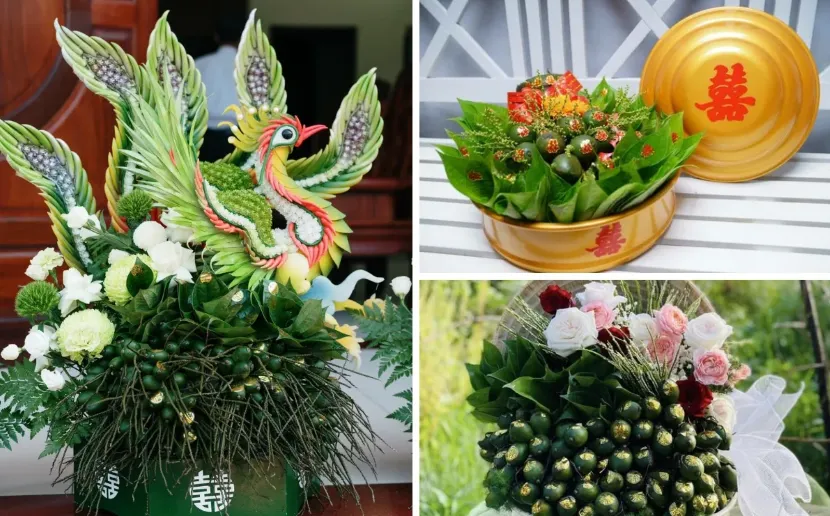
Betel and areca nut tray at a Vietnamese wedding ceremony
You’ll also see betel used in offerings to ancestors. Placing fresh quids on family altars is a way of showing reverence and keeping a spiritual connection with those who’ve passed on. It’s part of the larger practice of ancestor worship, which is deeply embedded in Vietnamese life.
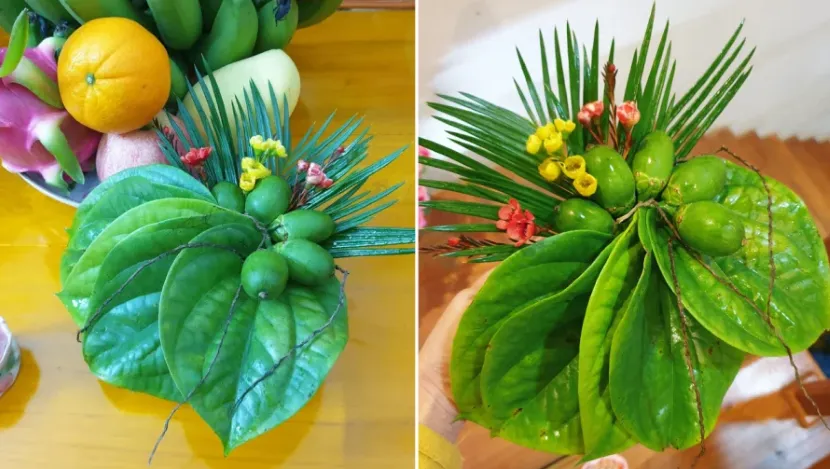
Vietnamese offer betel leaves and areca nuts to their ancestors
Even when it’s not being chewed, betel holds space in these moments. It acts as a cultural thread that ties together generations, values, and rituals.
4. Who chews betel today?
While betel chewing used to be widespread across all ages and regions in Vietnam, today it's mostly older generations and rural communities that keep the tradition alive. You’re more likely to see elderly women chewing betel while chatting with neighbors or sitting outside their homes than young people reaching for a quid.
In urban areas, betel chewing has declined sharply. Changing social norms, increased awareness of health risks, and the rise of modern lifestyles have all played a role. For many younger Vietnamese, betel is something associated with their grandparents—not something they do themselves.
That said, the tradition hasn’t disappeared. It still holds cultural value, especially in ceremonial contexts. During weddings, family festivals, the 1st or 15th day of the lunar calendar, even city dwellers might buy betel leaves and areca nuts—not to chew, but to honor tradition.
So while betel chewing isn’t as common as it once was, it’s far from forgotten. It has shifted from a daily habit to a symbolic practice.
5. Health and social shifts
As Vietnam modernizes, public attitudes toward betel chewing are shifting. The health concerns, along with government health campaigns and better access to dental care, have contributed to its decline, particularly in cities and among younger generations. What was once a daily staple is now often seen as outdated or unhealthy.
There’s also a social shift happening. Red-stained teeth, once a symbol of beauty and maturity in traditional Vietnamese society, are now often viewed as undesirable. This change in aesthetic values has further distanced modern Vietnamese from the habit.
Still, in rural areas and among older communities, the practice continues—more for comfort and social bonding than for fashion or trend. And during cultural events, betel retains its place, not as a health product, but as a symbol of tradition and respect.
6. For curious travelers
If you’re traveling through Vietnam and come across betel chewing, it’s natural to be curious. You might even be offered a quid during a village visit or family celebration. So what should you do?
First—don’t feel pressured to try it. Most Vietnamese people won’t be offended if you politely decline. A simple smile and respectful refusal go a long way. But if you are interested, it’s okay to ask questions. Many locals will appreciate your curiosity, especially if you show genuine interest in the cultural meaning behind it.
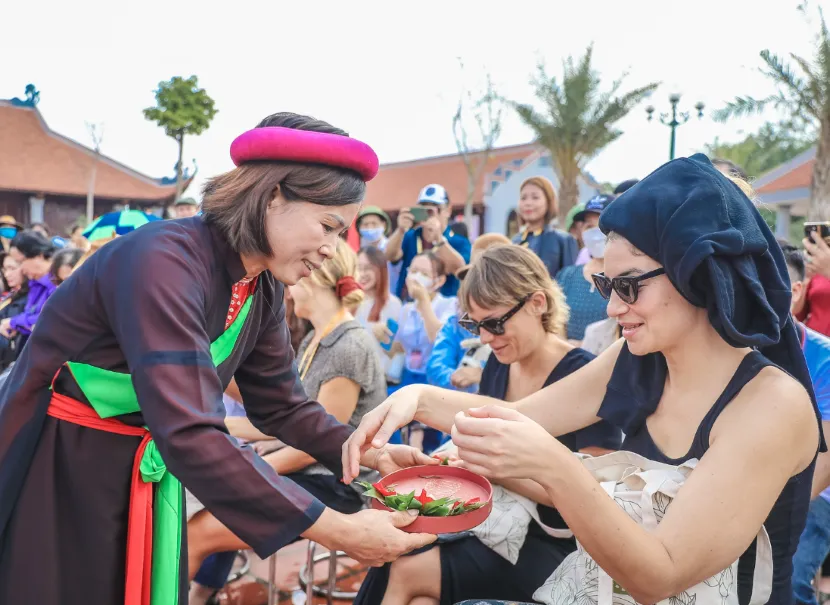
Tourists join in traditional betel chewing practice in Vietnam
If you do decide to try a quid, be aware: the taste is sharp and bitter, and it creates a strong red juice. It’s polite to spit discreetly, as that’s part of the process. And it’s not something you need to finish—just the act of trying can be seen as a gesture of cultural respect.
From village gatherings to wedding ceremonies, betel chewing tells a story of hospitality, love, and respect passed down through generations. While the practice is fading in everyday life, especially in urban areas, it remains a powerful symbol in Vietnamese culture. So if you find yourself face-to-face with a betel quid in Vietnam, don’t just see it as something to chew. See it as an invitation—to learn, to listen, and to appreciate a piece of the country’s living history.
See more:
- Dong Ho Painting - Vietnamese traditional artwork
- Lim Festival - A celebration of folk music and heritage in Vietnam
- Vietnamese conical hat - Where style meets function in Vietnamese culture
- 10 Must-see cultural and traditional Vietnamese performances
- Vietnamese Moon Festival - A special occasion in Vietnam










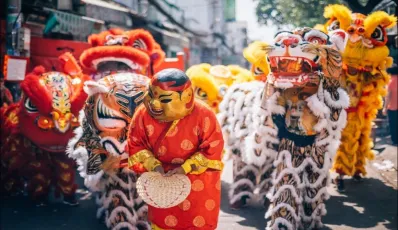

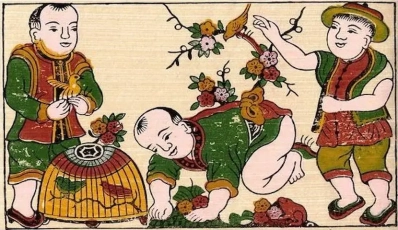








 TRAVELERS' CHOICE 2025
TRAVELERS' CHOICE 2025 